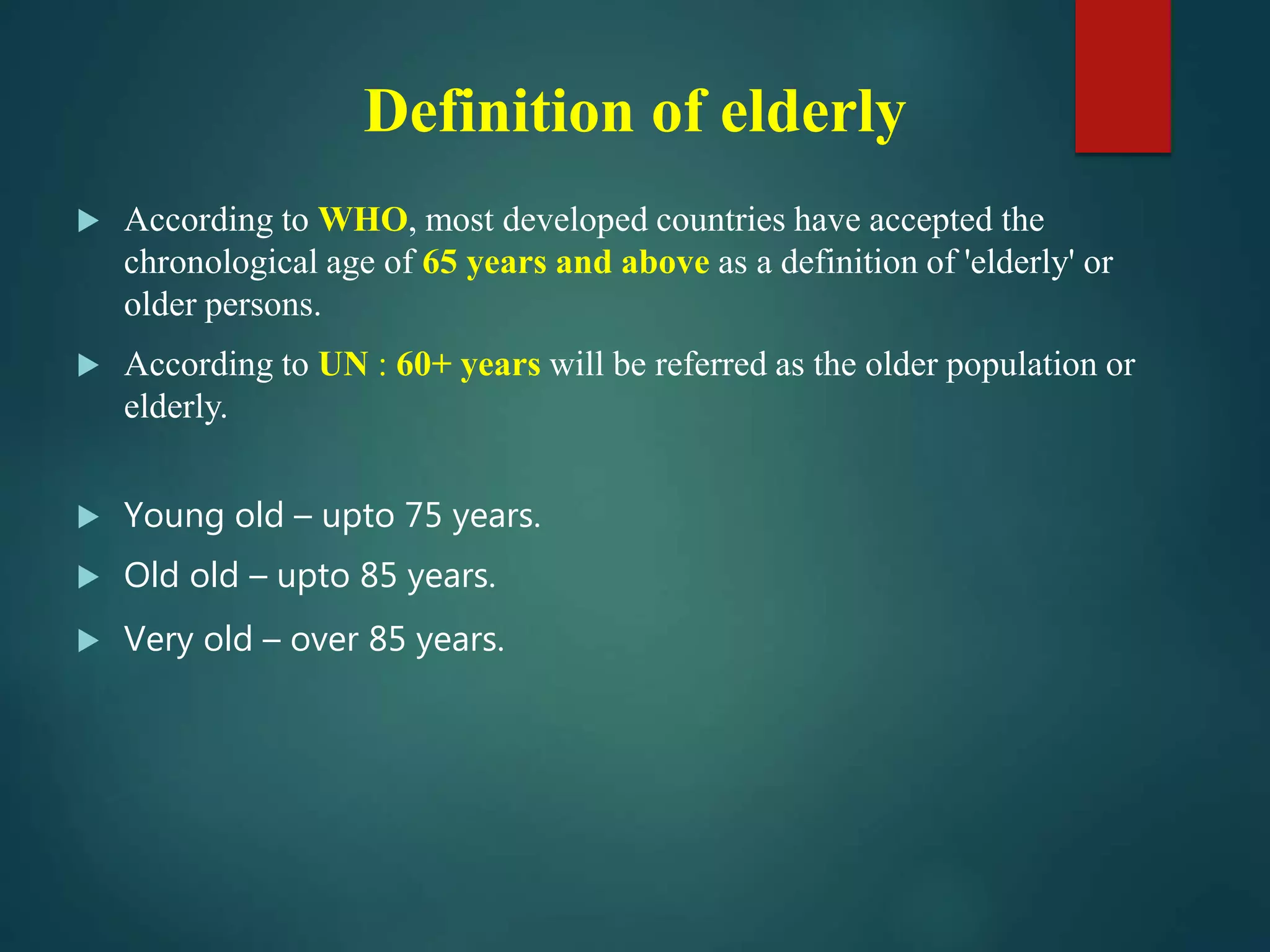This document provides an overview of geriatric care and the problems faced by the elderly population. It defines key terms like aging, geriatrics, and gerontology. It discusses the physiological, pathological, psychological, and social problems commonly seen in older adults, such as loss of mobility, cardiovascular disease, dementia, depression, and abuse. It also outlines the rising trends in life expectancy globally and the projected growth of elderly populations in countries like India. The document emphasizes the importance of geriatric assessment and preventive healthcare for older populations, which includes screening, rehabilitation, injury prevention, and supporting caregivers.









































